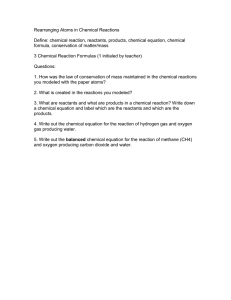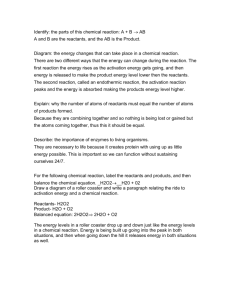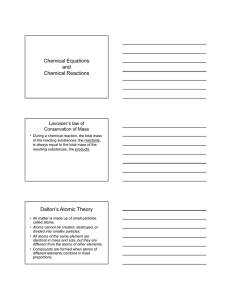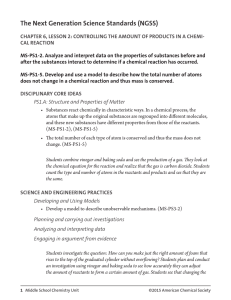Writing Chemical Equations From Words to Numbers
advertisement
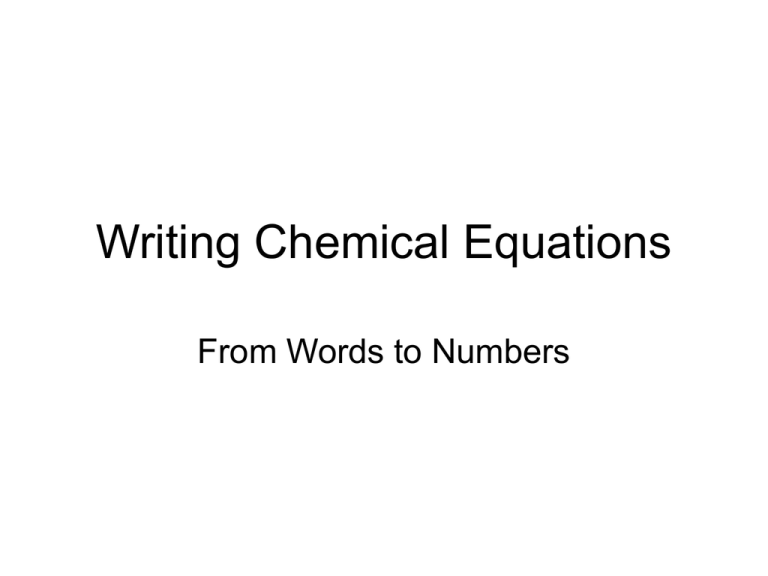
Writing Chemical Equations From Words to Numbers Introduction • Chemical change is represented by an equation in which the formulas for reacting substances (reactants) are written to the left. An arrow separates these from the formulas for products. • 2Al(s) + 3Br2(l) → 2 AlBr3(s) Introduction (continued) 2Al(s) + 3Br2(l) → 2 AlBr3 • The physical state of each substance can be indicated by using (s) for solid, (l) for liquid, (g) for gas, and (aq) for an aqueous solution. Introduction (continued) • 2Al(s) + 3Br2(l) → 2AlBr3(s) • The coefficients can be interpreted in terms of: – Individual species • 2 Al atoms react with 3 Br2 molecules – Amounts in moles of species – 2 moles of Al react with Introduction (continued) • Chemical change does not result in destruction or creation of atoms. Thus all atoms in the reactants must also be present in the products. • 2Al(s) + 3Br2(l) → 2AlBr3(s) • In the above equation there are 2 Al atoms and 6 Br atoms, thus matter is conserved. Step 1 • Identify all substances in the given problem • Write their chemical symbols and/or formulas – Pay attention to your charges!! – This means use subscripts but do not use coefficients at this point Step 1 - Example • The reaction of zinc with aqueous hydrochloric acid produces a solution of zinc chloride and hydrogen gas. • Zn(s) • HCl(aq) • ZnCl2(aq) • H2(g) Step 2 • Determine the sequence of events in the reaction • Identify the reactants and products • Set them up with an arrow going from reactants to products Step 2 - Example Zn(s) + HCl(aq) ZnCl2(aq) + H2(g)
